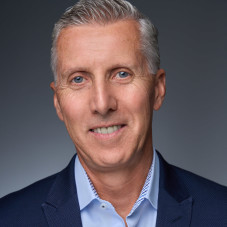“It is not necessary to change. Survival is not mandatory.” I can see a sign with that quote by W. Edwards Deming on it from the desk in my office. It reminds me – and all others who see it – that change is mandatory because survival is necessary for our organization, and I’m sure the same is the same for yours. Of course, change shouldn’t be undertaken randomly, haphazardly, or because a podcast asserted that to not continually change is to go into some sort of stasis. Sometimes change is a choice. For example, a business might have been organized when people essentially stayed at a company for life and didn’t leave every few years as is the case today. So, it is necessary to change some aspects of the business’s organization to both attract and retain employees. Sometimes change results from something in our environment, whether it is economic (e.g., inflation), regulatory (e.g., last August, California passed rules banning the sale of new gasoline-powered cars by 2035), or market-driven (e.g., a competitor comes out with a new product that makes yours less viable in the market). Regardless of whether change is driven from internal decisions or external forces, one thing that I’ve found essential for an organization is something that provides continuity, that makes the organization what it is. Call it a “mission” or call it a “North Star,” the fundamental nature of the business is something that doesn’t change, even if there are some tweaks or modifications to make it achievable. I’ve led organizations from a machine builder to a technology association (AMT), and in each, I strived to realize four cornerstones that provide the structure to how the organizations do things – not what they do.
Passion. Everyone should be passionate about what they do. Those who simply “punch the clock” or “mail it in” are not creating exceptional products or services.
Pride. This is closely aligned with Passion. When you do something, you should be proud of what you’ve accomplished. Certainly, there are aspects of your job that aren’t the stuff of amazement, but you should never feel less than satisfied for a job well done.
Family. First, there are the people at home. If what you do doesn’t allow you to do right by them, then when you come to work, you are not going to do what you should be doing. This is the case for everyone in your organization. Second, there is your “family” at work. Odds are, you spend more time with them than with your actual family members, so treat them with the same level of respect and deference as you do with the people at home.
Fun. This may strike some people as being antithetical to work (even though they won’t admit it). Again: You and the people in your organization spend a large amount of time together doing something that is, well, hard. If it weren’t hard, then everyone could do it, and if they could, then your company is not long for this world because competing in a commodity category is a relentless race to cut price. What is helpful in an organization is to provide the opportunity every so often for people to enjoy themselves – and not “obligatory fun” because that simply doesn’t exist.
If you look at companies that have been successful over time – at least 10 years – then you’ll likely find they have their own approach to the way their cultures are built. Consider Danaher, the global science and technology company. Its core values are self-explanatory:
The Best Team Wins
Customers Talk, We Listen
Kaizen Is Our Way of Life
Innovation Defines Our Future
We Compete for Shareholders
While the company has to react to changes – the industries it competes in are health care and environment, so changes are just part of the landscape – it is hard to imagine how it can’t be successful with a motivated team that engages with customers and operates with a continuous-improvement mindset that strives to innovate while recognizing the importance of a return on investment. Dr. Deming also said something else that is germane to this topic: “I am forever learning and changing.” He realized that the more he knew, the more it helped him reconsider what he thought he knew or to change what he had been doing. Our organizations need continuity, things that are fundamental. But they also need to understand that the way things have always been done is likely not the way forward.









